- W-97, MIDC, Anand Nagar, Ambernath (E), Dist: Thane, MH, INDIA, Pin: 421506
- marketing@fluidtecq.com

 Knife gate valves are designed to handle tough industrial media, but even the best valve can fail prematurely if not maintained properly. At Fluidtecq, we’ve compiled 10 essential maintenance practices that can significantly increase the lifespan and performance of your pneumatic knife gate valves.
Knife gate valves are designed to handle tough industrial media, but even the best valve can fail prematurely if not maintained properly. At Fluidtecq, we’ve compiled 10 essential maintenance practices that can significantly increase the lifespan and performance of your pneumatic knife gate valves.
Let’s explore not just what to do, but also why it matters
Why this matters:
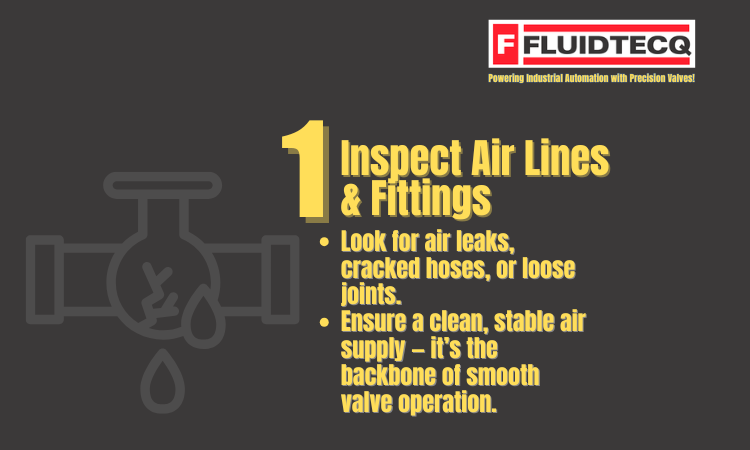
Pneumatic valves rely entirely on air pressure to operate. If air lines are leaking, cracked, or the fittings are loose,
the valve may receive insufficient or inconsistent pressure—leading to slow operation, incomplete closure, or even failure to open. This can cause product wastage, process downtime, or safety hazards. Routine inspection helps catch these issues early before they disrupt your operations.
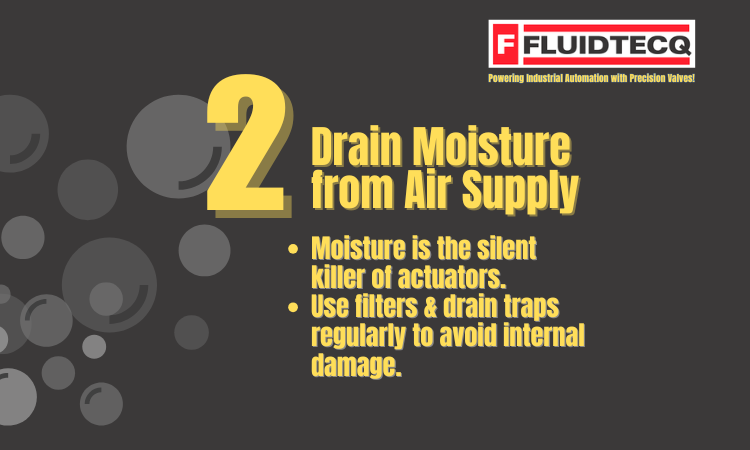
Why this matters:
Moisture in compressed air is unavoidable, but it’s highly destructive. It causes corrosion inside actuators, clogs valves with rust particles, and can even freeze in cold environments, jamming your system. Moisture also degrades seals and bearings. Installing and regularly draining filters and moisture traps prevents internal damage and ensures long-term actuator health.
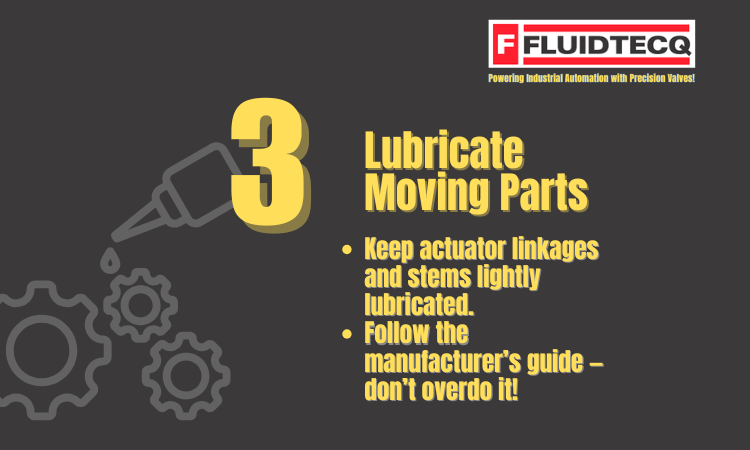
Why it matters:
Actuator components like linkages and valve stems are in constant motion. Without lubrication, these parts experience increased friction, leading to wear, overheating, and eventually failure. However, over-lubrication can attract dust or form sticky residue, especially in dusty environments. Proper lubrication, in the right amount and with the right product, minimizes wear and maintains motion efficiency.
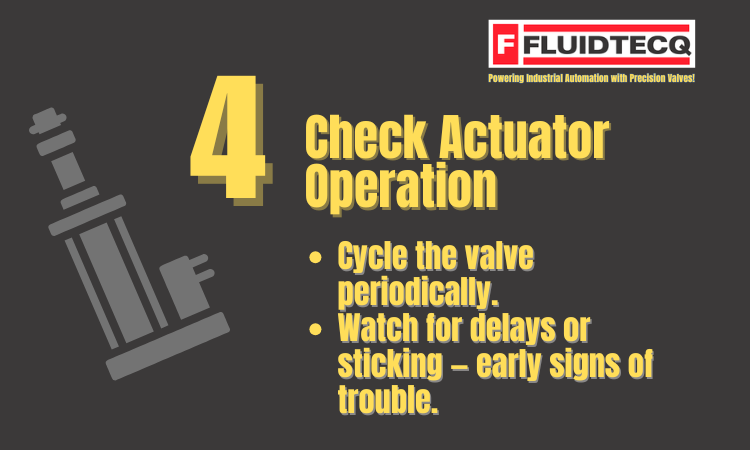
Why it matters:
Over time, actuator performance can degrade due to internal wear, air pressure issues, or control signal delays. If you don't periodically cycle the valve, minor mechanical resistance may go unnoticed until it results in a full-blown failure. Watching for irregular motion helps identify issues like internal binding or solenoid delay before they interrupt your process.
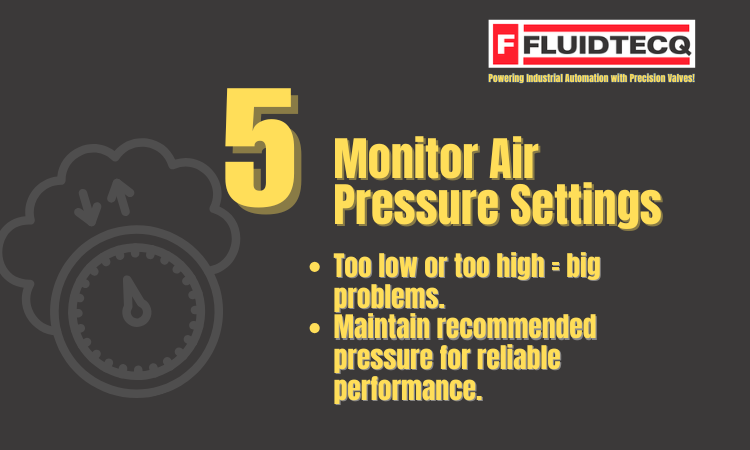
Why it matters:
Each valve and actuator is designed to operate within a specific pressure range. Operating below this range can result in sluggish or failed actuation, while too much pressure can blow seals, crack parts, or damage the actuator. Pressure regulators and gauges should be calibrated and monitored regularly to ensure consistent, optimal performance.
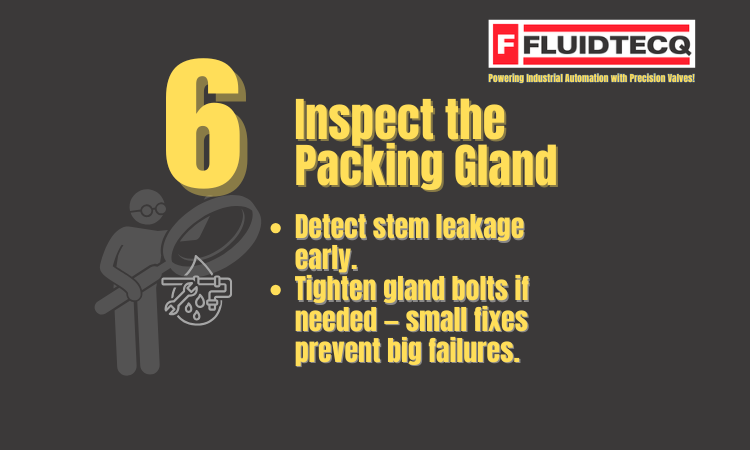
Why it’s necessary:
The packing gland seals the valve stem where it exits the body. Over time, vibration, pressure, and wear can cause this area to leak. Even minor leakage can lead to fluid loss, corrosion, or contamination of the actuator. By routinely inspecting and tightening the gland bolts, you prevent these leaks from escalating into major problems, thus maintaining valve integrity.
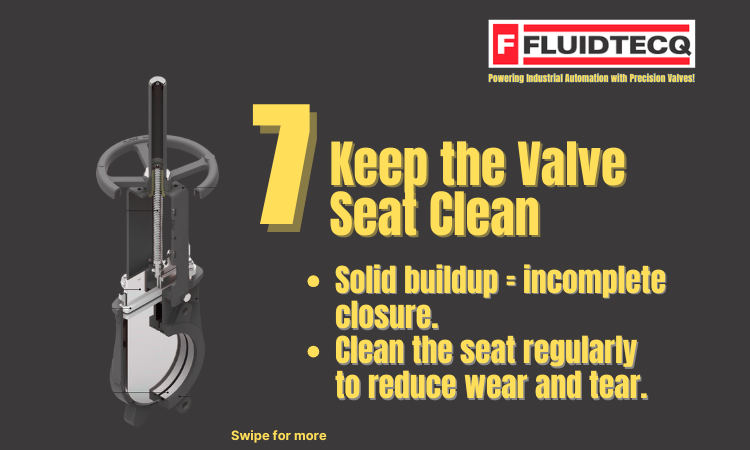
Why it matters:
Knife gate valves must fully close to seal correctly. When solids or debris build up on the seat area, the gate can’t shut properly, leading to leakage, pressure loss, or backflow. Dirty seats also cause uneven wear, shortening the life of the valve. Regular cleaning ensures proper sealing, reduces wear, and keeps operations safe and compliant.

Why it matters:
Solenoids and limit switches are the brains of your automation system. Dust, oil mist, or fine debris can block signal transmission or jam the moving parts. This can lead to unreliable valve movement, safety system malfunctions, or erratic behavior. Routine inspection and cleaning ensure these devices send and receive commands as intended—keeping your automation smooth and accurate.
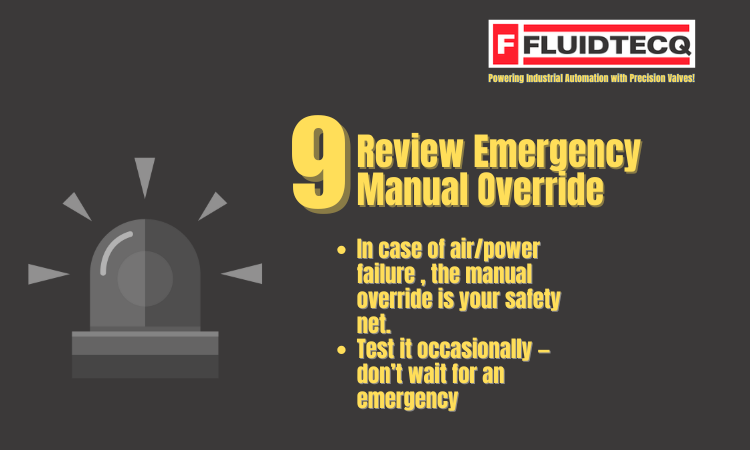
Why it matters:
In case of actuator or air supply failure, the manual override allows plant staff to control the valve manually. However, this feature is often ignored—until it's needed. If the override mechanism is rusted, jammed, or non-functional, it defeats its purpose. Periodic testing ensures that it works when emergencies strike, minimizing downtime and safety risks.

Proactive maintenance is the key to keeping your pneumatic knife gate valves running reliably. By following these 10 smart techniques, you’ll not only reduce unplanned downtime and repair costs but also maximize the return on your valve investment.
At Fluidtecq, we’re committed to delivering industrial valve solutions that last. Whether you're in cement, water, power, food, or chemical processing—we help you engineer reliability from the ground up.. 
Keep Your Systems Flowing with Confidence
For reliable Knife Gate Valves, Ball Valves, Butterfly Valves, Dampers, Rotary Actuators, and Solenoid Valves — designed for the most demanding industrial environments — contact our experts today to discuss your application needs!
📍 W/97, MIDC Anand Nagar, Ambernath (E), Dist. Thane: MH, INDIA
📲 +91 99700 68207 / +91 73505 40303